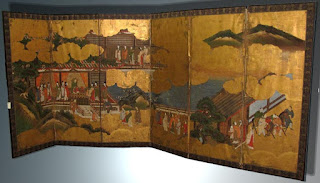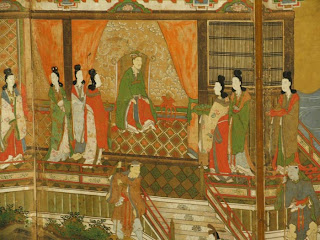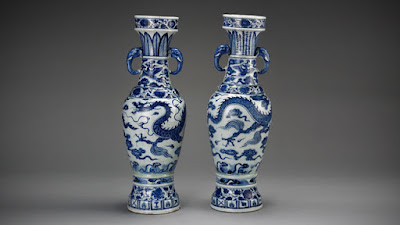Japanese Art and its Path to New England Culture
 |
| Fenollosa Collection MFA Boston, Massachusetts |
Japanese Art and its Path to New England Culture
During the 19th C. Salem, Massachusetts born scholar, scientist and later fan of Asian culture, Ernest F. Fenollosa (1853-1908) left a legacy which to this day is still being felt by the world of art and eocnomics. Following his graduation from Harvard University in Cambridge in 1874 Fenallosa took a year's worth of study at the Museum of Fine Arts School in Boston and was subsequently invited to Japan in 1878 to teach by another previous Salem resident Edward S. Morse (1838-1925) who had gone to Japan to study brachiopods and work as a Natuarlist.
While in college Fenallosa had learned to paint, once in Japan with his wife Elizabeth Goodhue (Millett) also a painter and sculptress, he was fast becoming a fan of Asian Art as well and an ardent student of Japanese Philosphy.
 |
| Japanese Collection MFA Boston, Edward S. Morse |
Over the ensuing decades Edward Morse built the now famous Morse Collection of Japanese Pottery of over 5,000 examples gathered during his years there. His pottery collection was published by the MFA in a very large oversize tomb in the early 20th C. limited to 1000 copies. (fortunately I have a copy) He was also the keeper of Asian Pottery at the Museum of Fine Arts in Boston as well as serving on the board of the Peabody Essex Museum.
 |
| 18th C. Japanese Screen Depicting Chinese Court Scene of the Kano Eitoku School, Private Collection Gloucester, Massachusetts |
 |
| 18th C. Japanese Screen with Chinese Subject matter, Private Collection Gloucester, MA |
It was during this period that New Englands understadning of Japan and Japanese art began to rival that of China which was long established decades before. During this period of expanded understanding of Japan's art and philosophy, numerous objects also found their way into houses in the area. The above screen was found in a house in Hamilton, Massachusetts, purportedly once the property of Louis Prince Agassiz.
Feel free to email or call with any questions about your own , Screens, Chinese Silks, Porcelains or Jades or their values.
Thank you for visiting ~ Peter Combs
Gloucester, MA 978-283-3524


Japanese Art And Its Path To New England Culture >>>>> Download Now
ReplyDelete>>>>> Download Full
Japanese Art And Its Path To New England Culture >>>>> Download LINK
>>>>> Download Now
Japanese Art And Its Path To New England Culture >>>>> Download Full
>>>>> Download LINK E8